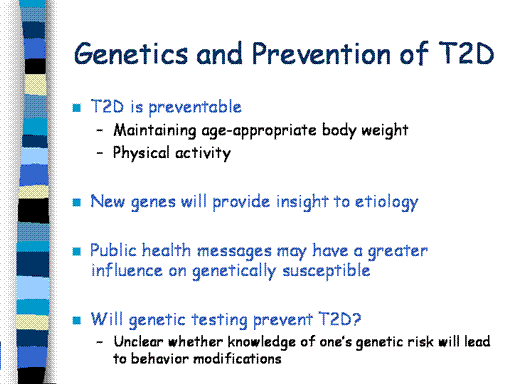| front |1 |2 |3 |4 |5 |6 |7 |8 |9 |10 |11 |12 |13 |14 |15 |16 |17 |18 |19 |20 |21 |22 |23 |24 |25 |26 |27 |28 |29 |30 |31 |32 |33 |34 |35 |36 |37 |38 |39 |40 |41 |42 |43 |44 |45 |46 |47 |48 |49 |50 |51 |52 |53 |54 |review |
 |
Unlike T1D,
T2D can generally be prevented by maintaining an age-appropriate body
weight and engaging in physical activity. Given the recent obesity
epidemic, it is obvious that current intervention strategies are being
ignored by a majority of individuals in the general population.
Leaders of the
Human Genome Project have predicted that genetic tests for many common
diseases would be available in first decade of the 21st century, permitting
persons ‘to learn their individual
susceptibilities and to take steps to reduce those risks’ by applying
interventions based on ‘medical surveillance, lifestyle modification,
diet or drug therapy’ (Collins and McKusick, 2001).
In fact several companies are now offering genetic susceptibility
testing, which can be ordered online by any individual, for conditions
such as cardiovascular disease and obesity.
|